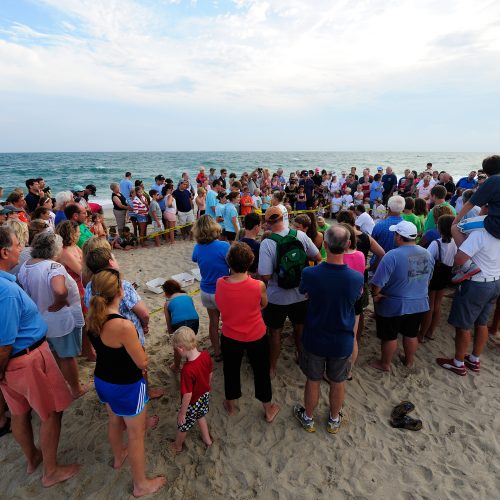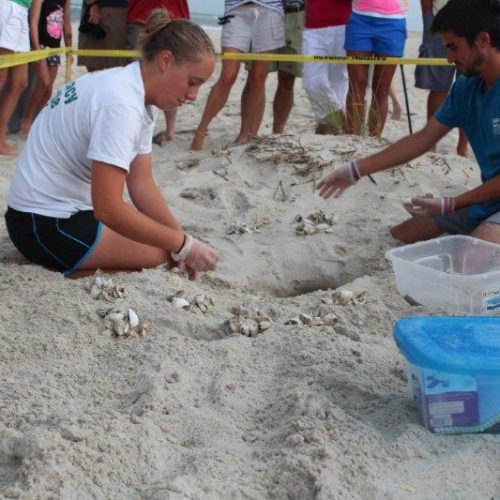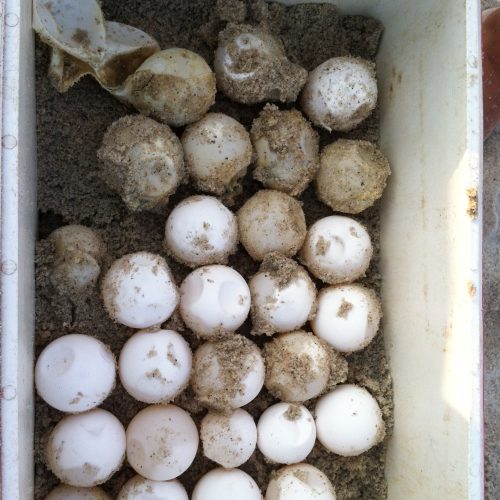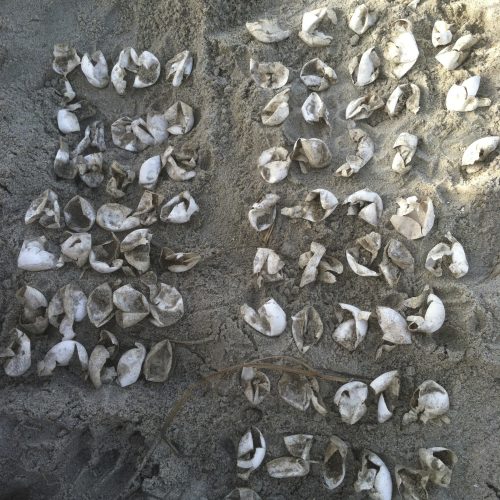Excavating the Nest
Scientists can learn a lot from what is left behind after a nest hatches.
Sea turtles hatch from their nests about two months after the mother turtle lays the nest on the beach. They have to wiggle and dig and use each other for support to get to the surface.
Sometimes turtles cannot get out of the nest, either because they hatched late, or are buried under shells. Some turtles never even hatch out of their eggs. Other turtles hatch out of their eggs but die before making it out of the nest. This is normal, which is why sea turtles lay lots of eggs.
All sea turtle species are listed as either threatened or endangered, so scientists try to help their populations whenever they can. There is a lot of information that scientists can get by digging up a nest after it has hatched. One way scientists can help the sea turtles is by excavating, or digging up, a nest that has already hatched.
Once they have given the healthy hatchlings a chance to dig their way out of the nest, the scientists dig it up the rest of the way and see what is left. They count the number of eggshells left in the nest to see how many of the turtles hatched. Hopefully, most of these hatched turtles were able to get out of the nest. Some hatched turtles might still be hanging out in the nest, unable to get out. Others may have died before being able to get out of the nest. Scientists count empty egg shells, hatchlings left in the nest and unhatched eggs to determine the total number of eggs laid.
The people who dig up sea turtle nests are professionals. They have to be very careful not to dig up the nest too soon. They are also concerned about not wanting to harm any turtles that might be left in the nest. If you see a sea turtle nest hatch, the best thing you can do is to leave it alone. If it is an unmarked nest (without a sign or other information), report the nest to the local authorities.
Photos courtesy Bald Head Island Conservancy.
Excavation Data
The following information is based on the data that scientists collected from nests in Carolina and Kure Beaches.
Turtles are listed in one of four states:
- hatched = able to get out of the nest on their own.
- live-in-nest = hatched but unable to get out of the nest on their own
- unhatched = did not hatch out of their eggs
- dead = able to hatch but died before making it out of the nest.
The North Carolina Aquarium at Fort Fisher received some of the hatchlings recovered as “live-in-nest” from these nests to raise for a year as ambassadors and then release.




